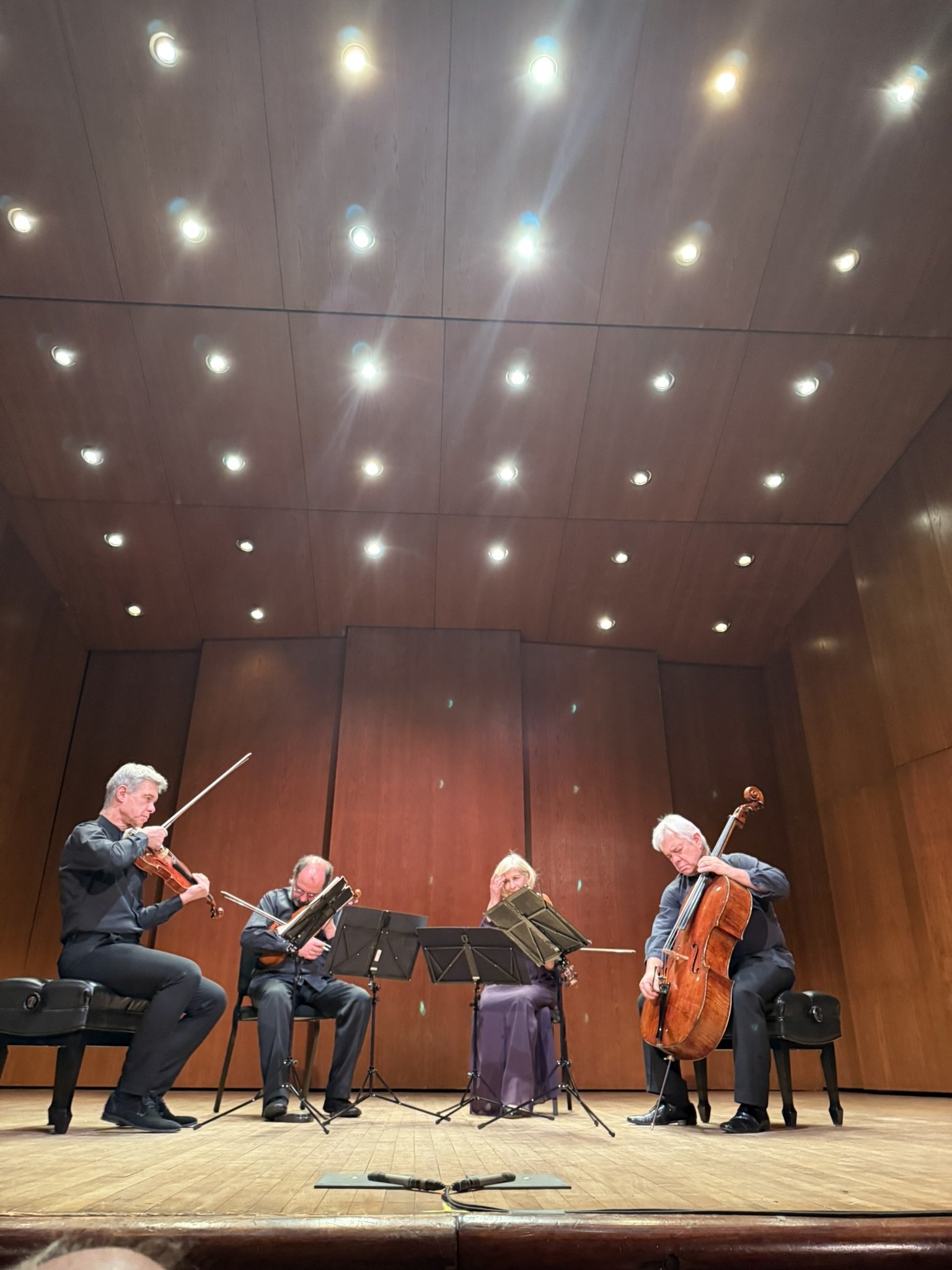Hagen Quartet, a string quartet formed 43 years ago by brothers from Salzburg (one who was replaced by a friend midway through), announced that they would disband in 2026 and performed their final show in New York on February 19th. In Op. 54, published in 1788 by Haydn for the general public, I felt a flame of music burning in my heart when the scale of the first violin, Lucas, soared in the Allegretto. There were no bars, melody, and harmony sync in the Haydn that was lit inside me, and each consciousness naturally arose and connected with all the consciousness in the venue, and the slightest gestures of the audience seemed to affect their sounds and phrases directly. Even when the same melody was repeated, it was as if I was looking at different scenery in different places, and even when I arrived at the same place, it was as if I was looking at a different version of myself. Hagen was good at hiding, and the passages that appeared in the shadows of the melody were like the glow of a vast star far away in Haydn's universe. Clemens' cello sometimes left a sound after playing, as if the music were drifting in space. They created a sense of tension regardless of time or distance. Beethoven's Razumovsky came to mind when the performance (phenomenon?) ended. The following piece, No. 3, was written by the newly married Schumann in 1842, during a period of mental instability and loneliness, and was completed in a matter of days. After a short descending motif that sounds like a sigh appears many times, the swaying rhythm with rests makes you feel impatient and irritated, and the low-voiced cello sings a melody of love in a high voice as if it is lovesick. In the second movement, the theme is varied in a molto agitato style. The impatient and urgent feelings continue to be pushed out until the l'istesso tempo, and the attack in the resolute sounds like a sharp thorn in the heart. In the third movement, Adagio Molto, the dotted ostinato played by Rainer Schmidt on the second violin, Lucas' melody, and Veronica's viola begin to emerge, and it seems as if Schumann's true expression, which had been hidden until then, finally comes to light. Eventually, the pulsation of Schmidt's dotted ostinato begins to dance as the theme of the final chapter.
ザルツブルク出身の兄弟で(途中から友人に交代)43年前に活動を始めた弦楽四重奏グループのハゲンカルテットが2026年で解散を発表し、ニューヨークで2月18日に最後の公演を行った。ハイドンが一般の愛好家のために1788年に出版したOp.54では、アレグレットで駆け上がるファーストバイオリンのルーカスのスケールに心の中に灯る音楽の炎を感じた。彼らのセッションはリズムをとったり合わせている様子がない。私の中に灯されたハイドンの炎に小節線やメロディやハーモニーもなく、それぞれの意識が自然に発生し会場のあらゆる意識とつながり、聴衆のわずかなジェスチャーも彼らの響きやフレーズにダイレクトに働きかけるようで彼らの意識もまた同じだった。同じメロディが繰り返されても、違う場所で違う風景を眺めているようで同じ場所にたどり着いても、まるで違う自分を見ているようでもあった。ハゲンは隠すのがうまく、メロディの影に現れるパッセージがハイドンの宇宙の遥か彼方にある巨大な恒星の輝きのようだった。クレメンスのチェロは、ときに弾いた後の響きをほおっておき、それは音楽が空間に漂うのを眺めているようだった。こうして、彼らは時間や距離の隔たりに関係なく、その時の緊迫感を生み出していた。演奏が(現象?)終わると私の中でベートーベンのラズモフスキーが頭を過った。1842年に新婚のシューマンが精神障害と孤独の中で書いたOp.41の3は数日で完成させたそうだ。溜息にも聴こえる短く下降する音型が何度も現れた後、休符を伴う揺れるリズムが焦りや苛立ちを感じさせ、低い声のチェロが恋をわずらうように高い声で慈愛のメロディを歌う。2楽章はモルトアジタートでテーマが変奏しリステッソテンポまで焦りや切迫した気持ちが押し出すように続き、リソルートでアタックが心のとげのようだ。3楽章のアダージョモルトで第二バイオリンのライナー・シュミットが奏でるオスティナートにルーカスのメロディ、そして、ベロニカのビオラが現れると、今まで隠れていたシューマンの別な表情が現れたようだった。やがてシュミットの付点のオスティナートの脈動は最終章のテーマとなり踊りだす。
2.18.2025
Hagen Quartet
FRANZ JOSEPH HAYDN
Born in Rohrau, Austria, 1732
Died in Vienna, 1809
String Quartet in G Major, Op. 54, No. 1
String Quartet in E Major, Op. 54, No. 3
ROBERT SCHUMANN
Born in Zwickau, Germany, 1810
Died in Endenich, Germany, 1856
String Quartet No. 3 in A Major, Op. 41, No. 3


